“I’ve been on a diet for two weeks and all I’ve lost is two weeks.”
~Totie Fields
The average person in good health requires around 2,000 calories a day. Among other factors, your calorie intake depends on you age, gender, weight, and physical activity.
Your daily calorie intake comprises calories of all meals (including beverages) of the day: main meals (breakfast, lunch, and dinner) and snacks in between (2-3 snacks in total).
Many of us wonder why we are still gaining weight or can‘t lose it even when we are trying to eat healthier and/or have smaller portions. The answer may be that we are unwittingly consuming more calories than we realize. There are lots of foods that contain the invisible calories – the ones we tend to forget about.
Each time we reach for those invisible calories we may end up eating the excess calories (while not increasing our physical activity). We might not even realize that a cup of our favorite flavored coffee may be equal in calories to a one big meal of the day.
Here is a list of 10 foods that may contain calories you may forget about:
1. Wine
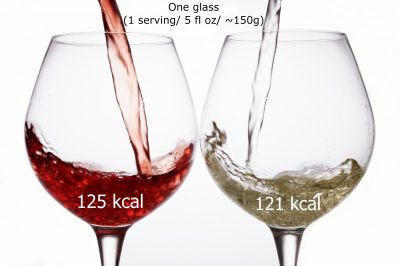
A glass or two of wine with dinner can easily become a pleasant habit. But if you are concerned about your weight, this may be the reason why even eating moderate portions you still fail to lose weight or even keep gaining it.
Liquid calories tend to be easier to ignore than other food calories and we may end up “drinking“ a big portion of extra calories next to our needed daily calorie intake without even realizing it.
Also, sipping wine can make you feel hungry, as alcohol stimulates your appetite. It reduces your self-control as well, so you’re more likely to binge eat.
One glass (or 1 serving/ 5 fl oz/ ~150g) of red table wine contains 125* calories (while white table wine has a little bit less – 121* calories).
Solution to Cut Calories:
When drinking wine, have a glass of water on the side. It will fill you up and you will reach for a glass of wine less often.
Also, try having lighter dishes that contain less fat – fatty foods “require” more wine, so you may end up drinking more without noticing.
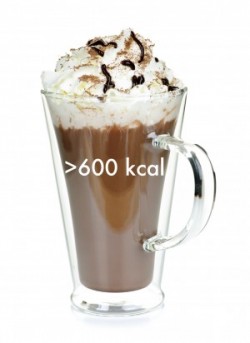
2. Coffee
Most of us don‘t go a day without coffee. And many times it‘s not just plain coffee – it‘s usually with additions, such as cream, milk, sugar, flavorings, to name a few.
While a cup of plain black coffee with no additions contains only 1-2 calories, coffee with additions may contain more than 600 calories! For example, a White Chocolate Mocha has 620 calories [Source: Business Insider].
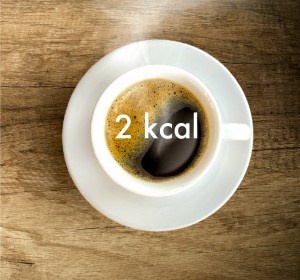
Having a cup of high-calorie coffee may lead you to “drinking” the amount of calories that equals to the calorie amount of the entire big meal while getting no nutrients needed for your body. All you get is empty calories** and lots of sugar that causes cravings and negatively affects your health.
Solution to Cut Calories:
Try drinking coffee as plain as possible. It may take some time for your taste buds to adjust, but soon you’ll enjoy it and get all the health benefits of plain coffee as well.
3. Fruit Juice (fresh or packaged)
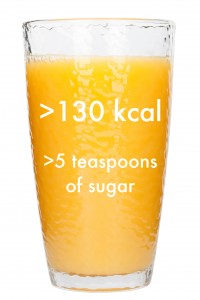 Store-bought juices should not be perceived as a healthy drink – it’s just another sugary drink loaded with a lot of sugar and calories. For example, a cup (250 g) of orange juice drink has 134* calories and 23 g of sugars while a cup of regular cola has 105 calories and 25 g of sugars.
Store-bought juices should not be perceived as a healthy drink – it’s just another sugary drink loaded with a lot of sugar and calories. For example, a cup (250 g) of orange juice drink has 134* calories and 23 g of sugars while a cup of regular cola has 105 calories and 25 g of sugars.
Although fresh fruit juices are far more superior than store-bought ones as they contain more nutrients (in the purest and most digestible form), however, they still are concentrated in terms of sugar (fructose) so as calories. For example, if you are making fruit juice at home you’ll require at least 4-5 strained fruits to make just 1 glass of juice. As a result in 1 glass you are getting sugar and calories of 4-5 fruits collectively (while getting lesser nutrients and fibers than if you would be eating whole fruits).
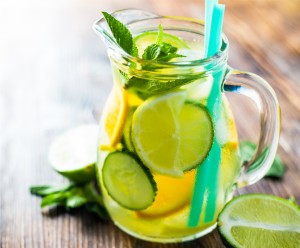
Solution to Cut Calories:
As it is easy to consume massive amounts of sugar from fruit juice, it‘s better to replace it with water. Research suggests that replacing sweetened caloric beverages with drinking water can help lower your total energy intake.
Try adding a squeeze of lemon, lime, or grapefruit to make it taste better.
Whenever you decide to go for juice, choose freshly made juice over the packaged ones. The latter ones contain lots of added sugars and all you get is empty calories.
When you have fresh-squeezed juice, try diluting it with water or ice to reduce the overall sugar content and cut back on calories.
4. Nonfat yogurt
Although a non-fat or low-fat yogurt does not contain any or little fat, it may be loaded with added sugar (it may be in the form of fructose or hidden under other names) to make up for the lack of taste in such a yogurt. So it‘s just another good option to gain weight. For example, low-fat vanilla yogurt may have up to 200 calories and 30 g of sugars in one cup (245 g). Not to mention artificial flavors, preservatives, coloring, and artificial sweeteners in such and similar yogurts, that may negatively impact your health.
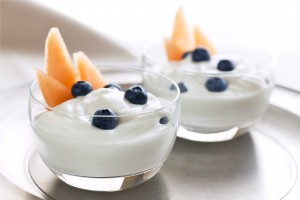
Solution to Cut Calories:
Choose plain low-in-sugar (or not sweetened) yogurt. If you want it to taste better, top it with a little amount of your favorite healthy flavor combinations, that may include fresh, frozen or dried fruits, berries, nuts, seeds, coconut, a sprinkle of ground cinnamon, etc.
Just make sure to have these additives in small amounts as they contain calories. The good thing is that such additives are not just emty calories – these ingredients contain valuable nutrients.
5. Nuts
Nuts may be an excellent healthy snack containing valuable vitamins and minerals, essential fatty acids, dietary fibre, and plant protein. Choosing plain unroasted nuts instead of a piece of cake as a snack can help you reduce the risk of coronary heart disease. It can also be a good substitute for meat, fish, and eggs.
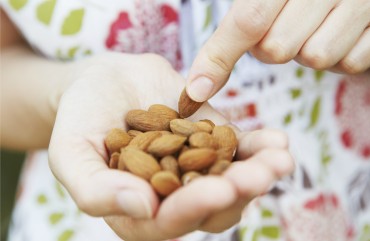
However, you should remember that nuts contain a lot of calories as well. 100 g (3.5 oz.) of nuts may have about 500 to 700 calories. For example, macadamia nuts contain the most – 718 calories per 100 g, walnuts provide 654 calories per same amount, hazelnuts contain 628 calories, and peanuts have 567 calories.
Solution to Cut Calories:
Enjoy this healthy and tasty snack by limiting your amount of it to a handful (up to 15 nuts) of nuts.
Choose plain unsalted nuts as roasted and salted nuts usually have more calories and are high in added fats and salt, which can be bad for your health as well.
6. Sauces and Condiments
When you are going to have your food with ketchup, mustard, mayonnaise, and/or other condiments, pay attention to calories that these additives contain. Many of them add not only taste to your food, but calories as well.
For example, regular honey mustard has 464* calories in 100 g (3.5 oz.). A 1-tablespoon serving of it has 139* calories.
Barbecue sauce contains 172* calories in 100 g (3.5 oz) and 246* calories in 1/2 cup (143 g).
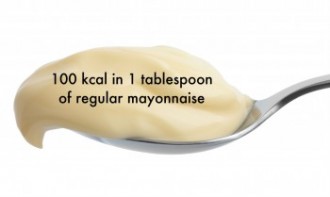
There is almost 100* calories in 1 tablespoon of regular mayonnaise. 1 cup (220 g) of it has 1496* calories.
So if you decide, for example, to go for a chicken sandwich, which contains up to ½ cup of mayonnaise, you may end up consuming about 700 calories only from mayonnaise, not to mention calories from other ingredients.
Solution to Cut Calories:
When making food at home, use sauces and condiments as little as possible. Make smaller portions of sauce for a person. Try using low-calorie condiments, such as yogurt and/or low-fat sour cream instead of a high-calorie ones.
When eating out, ask for condiments on the side and use a small amount of it.
Whenever you decide to go for pre-packed foods, have ones that are made with low-calorie condiments (read the label).
7. Soups

There are many people who love soups. And it’s easy to understand them. Soups are really a joy for your stomach. However, note, that there are soups that are real calorie bombs. Only one bowl of such a soup may have as many calories as your entire big meal should. For example, depending on how it‘s prepared, one cup of a creamy soup could have up to 500 calories. Also, soups that include beans, potatoes, fish, or meat are substantial enough to be a main course.
Solution to Cut Calories:
To cut calories, cook your soup using lean meats, low fat vegetable broth, and use only a small amount of oil. To make a soup more filling add a lot of fresh vegetables.
When eating out, order lean soup – skip creamy soups and soups containing beans, potatoes, and meat (except for those cases when the soup will be the main dish in your meal).
8. Fruits: fresh and dried
According to USDA recommendations, adults who get less than 30 minutes per day of moderate physical activity, need to consume 1.5-2 cups of fruit. Eating fruits is important for our health, however, they contain sugars (naturally occurring ones) and eating too many of them, especially in the evening, may provide you with extra calories. For example, 1 cup (150 g) of grapes (red or green, seedless) have 23 g of sugars and 104 calories; 1 medium banana contains 14 g of sugars and 105 calories.
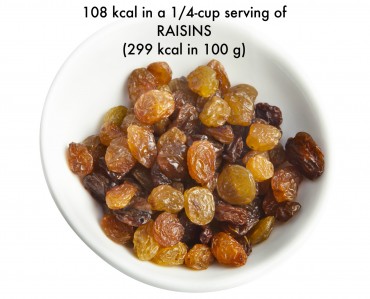
Dried fruits may be a healthy and tasty snack, however, when fruit is dried, it becomes a more concentrated source of calories and sugar.
Whenever you go for dried fruits, remember that they are calorie dense, so it’s important to watch portion sizes and resist mindlessly snacking on it. Note that a 1/4-cup serving of raisins contains 108 calories (299 kcal in 100 g), prunes contain 104 calories per 1/4-cup serving (240 kcal in 100 g), dried figs have 93 calories per 1/4-cup serving (249 kcal in 100 g), dried apricots contain 78 calories per 1/4-cup serving (241 kcal in 100g).
Solution to Cut Calories:
Try eating larger portion of your daily fruit intake in the first half of the day. It‘s ok to have some fruit in the evening, just watch the amount you eat.
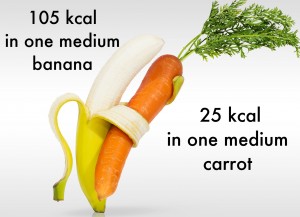
If you feel hungry for fruit in the evening, you may try substitute it with some vegetable that you like. Most vegetables have less calories than fruits (for example, 1 medium carrot (~60 g) has 25 kcal, 1 cup of chopped broccoli (90 g) contains 30kcal, 1 cucumber (300 g) has 45 kcal).
When you go for dried fruits, keep your portion sizes in check – this will help control your caloric intake. Stick with the standard serving size of ¼ cup dried fruit – that way you will avoid overdoing it on the calories.
Note that many types of store-bought dried fruits contain added sugar. If you’re watching your calorie intake, look for varieties that are unsweetened.
9. Salads
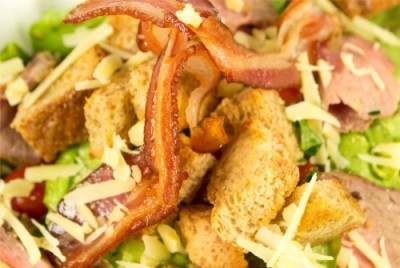
Depending on the ingredients, salad can be either a very healthy low-calorie meal or a meal that gives you more calories and less health.
The important part of the salad is dressing – it not only adds taste to your salad, but can also improve your health by leting you absorb more nutrients from vegetables (for example, if you add oil to it).
However, salad dressings can contain not only unhealthy additives but as many as 500 calories per serving as well. Most restaurants are using salad toppings made with bacon, oil, butter, nuts, mayonnaise, honey, sugar, and other high-calorie ingredients. And in many cases portion of dressing is excessive. For example, while 30 g (or 2 tbsp) of regular caesar salad dressing has 163 calories, 100 g (3.5 oz) of it contains 542 calories.
Solution to Cut Calories:
Don’t drown your salads in dressing. When eating out you can cut calories by ordering your dressing on the side and using only a small amount of it.
When eating at home try replacing store-bought salad dressing with your homemade low-calorie dressing made from a mix of herbs, spices, lemon juice or vinegar (or apple cider/ balsamic), and a small amount of olive oil.
If you want it to have creamy consistency, you may use low-fat yogurt, sour cream, and/or cottage cheese.
10. Ready-to-eat cereals, breakfast bars, snacks
The overall idea of cereals is to be the biggest source of some very important nutrients. However, they “evolved” and almost lost their original designation – today‘s breakfast cereals contain lots of added sugar, less nutrients, and are high-calorie foods.
For example, a 3/4-cup (30 g) serving of ready-to-eat chocolate cereals have approx. 120 calories and 11 g (3 teaspoons) of sugar (100 g of such cereals have 400 calories and 36 g (9 teaspoons) of sugar).
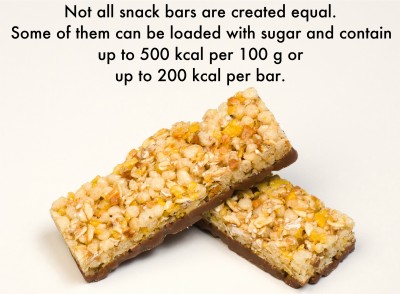
We all know that snack bars are quick, easy, and tasty. They may be a healthy option for your meal (breakfast or snack) if you choose it right. Not all snack bars are created equal. Some of them can be loaded with sugar and contain up to 500* calories per 100 g or up to 200* calories per bar (up to 150 calories per ounce).
Snacking, in general, can be a high-calorie habit, if you do not choose snacks wisely. They may provide you with lots of calories and leave you craving for more (for example, potato chips, chocolate, ice cream, doughnuts, many breakfast cereals, etc).
Solution to Cut Calories:
Plan your breakfast meals and snacks in advance and choose the unprocessed, low-calorie, and/or whole foods.

In order to benefit from breakfast cereals and snack bars without gaining excessive weight, read labels as you make your choice.
Choose bars that have lower sugar content. Focus on finding low-sugar cereals. Look for those that contain more fiber.
Consider going for whole grains. Sweeten your cereal naturally by adding cut up fruits like bananas, strawberries, peaches, etc.
Try replacing empty-calorie** bars and sweets with nutrient-dense foods (for example, fruits, berries, nuts, etc).
…………………………………………………………………………………………………………………………………………..
*Numbers are averages; individual products may vary.
**the term empty calories applies to food such as solid fats and/or added sugars supplying food energy but little or no other nutrition.
Sources:
U. S. Department of Agriculture
National Agricultural Library, Agricultural Research Service, U.S. Department of Agriculture
Thrasher, M. The 9 Highest Calorie Drinks You Can Get At Starbucks. Business Insider.
Stookey, J.D., Constant, F., Gardner, C.D., Popkin, B.M. (2007). Replacing Sweetened Caloric Beverages with Drinking Water Is Associated with Lower Energy Intake. Obesity. 2007 Dec;15(12):3013-22. doi: 10.1038/oby.2007.359. Abstract


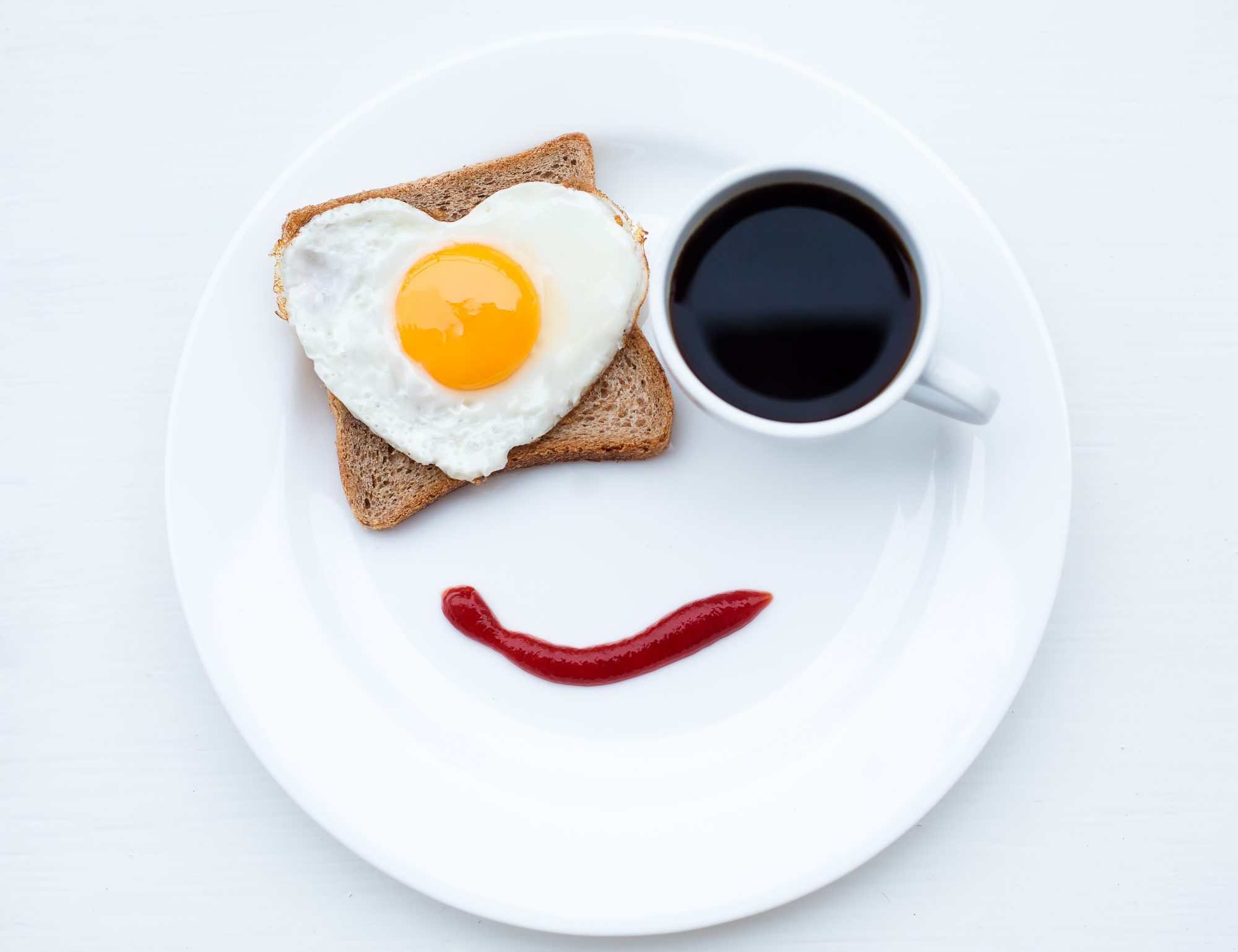







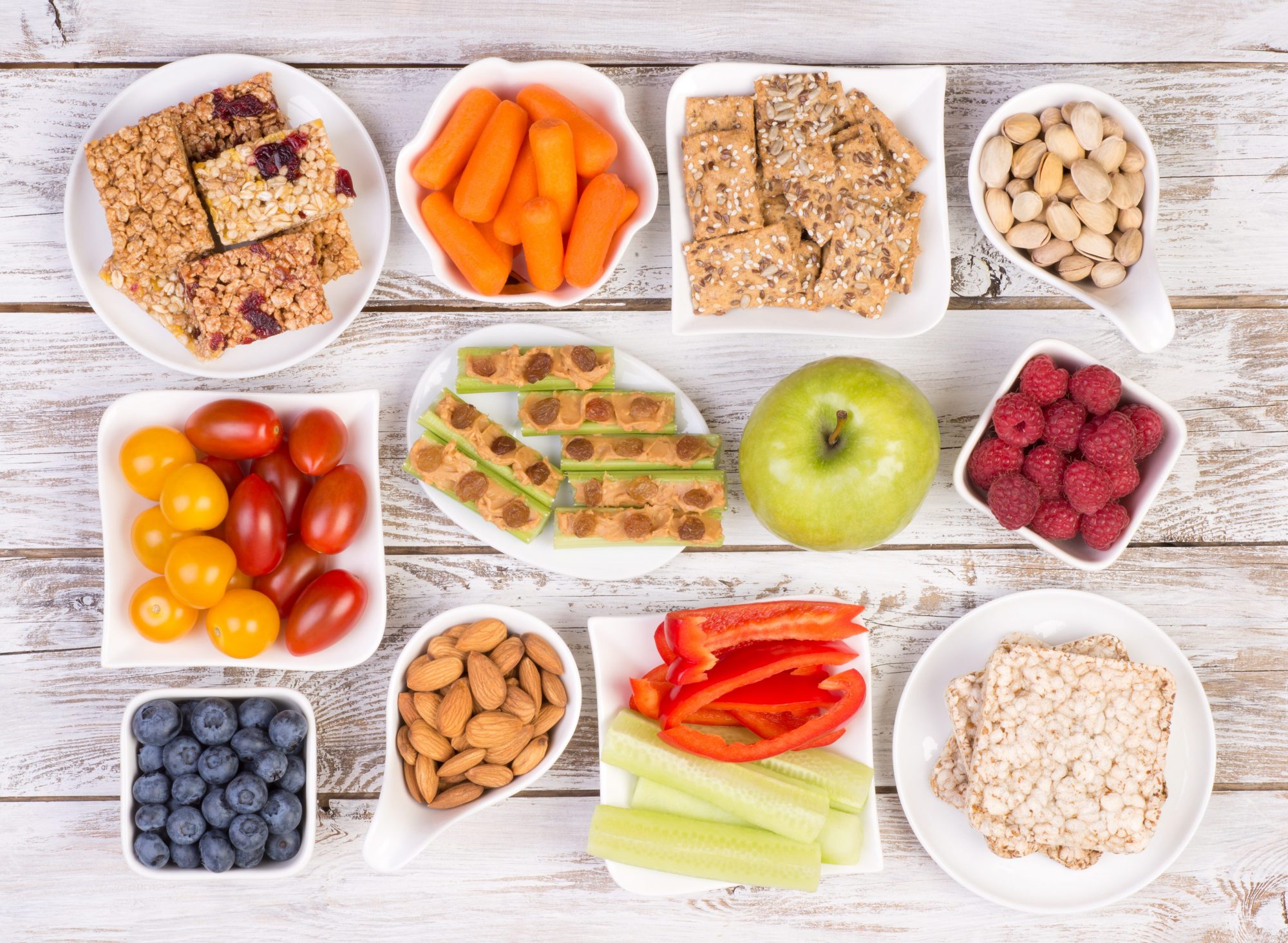
[…] salad dressing contains a lot of invisible calories in the form of sugar, salt, and mayonnaise. Try this light apple cider vinegar salad dressing, […]
Your style is so unique compared to other folks I have
read stuff from. Thank you for posting when you have the opportunity, Guess I will just bookmark this web
site.